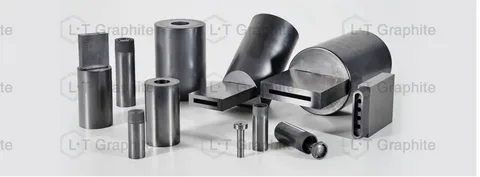Carbon graphite bearings offer a reliable solution in harsh industrial environments, where heat, chemicals, and moisture quickly degrade standard bearings. With built-in durability, self-lubrication, and chemical resistance, they outperform traditional materials in the most demanding conditions. This article explores why carbon graphite bearings thrive in extreme settings and which industries benefit most.
Built for Extremes: What Sets Carbon Graphite Bearings Apart
Carbon graphite bearings are made from a blend of carbon and graphite powders that are molded, baked, and often impregnated with resins or metals to improve strength or reduce porosity. The result is a bearing that combines:
- High temperature tolerance
- Low friction
- Self-lubricating capabilities
- Resistance to chemicals, solvents, and corrosive gases
- Compatibility with both dry and submerged environments
These features make them well-suited for harsh conditions where typical lubricated bearings break down, seize, or require constant maintenance.
Self-Lubrication: A Key to Reliability in Harsh Conditions
One of the most important advantages of carbon graphite bearings is their self-lubricating nature. Unlike traditional ball or roller bearings that require oil or grease, carbon graphite’s molecular structure allows for low-friction operation without external lubricants.
Oils can evaporate or degrade in high-heat environments. In chemically aggressive conditions, lubricants may wash away or become contaminated. However, carbon graphite bearings function despite these stresses, making them a reliable, low-maintenance solution.
Withstanding Extreme Temperatures
Many industrial processes involve operating at high or fluctuating temperatures—well beyond the safe limits of plastics and even some metals. Carbon graphite bearings can withstand operating temperatures in excess of 500°C (932°F) and, in some instances, even higher. This makes them ideal for:
- High-temperature furnaces
- Kilns
- Glass and steel manufacturing
- Exhaust systems
Unlike metals that expand significantly under heat, carbon graphite maintains dimensional stability, preventing bearing seizure or deformation.
Chemical and Corrosion Resistance
Carbon graphite bearings are often used in chemical processing plants, wastewater facilities, and marine environments because of their strong corrosion resistance. Where metals would rust and plastics would degrade, carbon graphite remains inert when exposed to:
- Acids and alkalis
- Corrosive gases like chlorine or sulfur dioxide
- Saltwater or brine
- Harsh cleaning chemicals
Their resistance to chemical attack helps extend equipment life and minimize costly downtime.
Thriving in Wet or Dirty Conditions
Bearings are constantly at risk of contamination in environments with continuous exposure to water, slurry, or dust. Carbon graphite bearings handle moisture well and can operate fully submerged—even in unclean or particle-laden liquids.
Their open-pore structure allows small amounts of fluid to be absorbed, improving the lubricating film. In pumps, mixers, and agitators, this property allows for smooth operation with minimal friction and wear, even during dry starts.
Industries That Depend on Carbon Graphite Bearings
Given these benefits, carbon graphite bearings are widely used in industries where harsh conditions are the norm. Here are a few examples:
-
Chemical Processing
Pumps and mixers handling acids, bases, and solvents need bearings that won’t corrode. Carbon graphite’s chemical resistance and dry-running ability make it the preferred choice in this industry.
-
Food and Beverage
These bearings can be formulated to meet FDA and food-grade standards and are ideal in environments that require constant washdown or sterilization—conditions that destroy traditional bearings.
-
Oil and Gas
Carbon graphite bearings in drilling and extraction equipment resist extreme temperatures and exposure to abrasive materials, maintaining performance even during pressure fluctuations and contamination.
-
Power Generation
Carbon graphite bearings’ low wear and high-temperature stability benefit turbines, high-speed motors, and steam equipment, reducing maintenance intervals and increasing uptime.
-
Aerospace
Aerospace systems demand lightweight, high-performing, and heat-tolerant components. Carbon graphite bearings fulfill all three criteria and are used in fuel systems, actuators, and air handling units.
Minimal Maintenance, Maximum Performance
In harsh environments, frequent equipment shutdowns for lubrication or part replacement can cost time and money. With carbon graphite bearings, operators benefit from:
- Longer operating life
- Fewer failures due to heat or chemical degradation
- Reduced lubrication needs
- Lower total cost of ownership
They’re particularly valuable in remote or inaccessible areas where regular maintenance isn’t feasible.
Ready for Tough Conditions?
Carbon graphite bearings provide long-lasting, reliable performance where others fail—handling heat, chemicals, and moisture with ease. Whether in power, aerospace, food production, or chemical processing, these bearings offer the durability your equipment needs to keep running with less maintenance.


